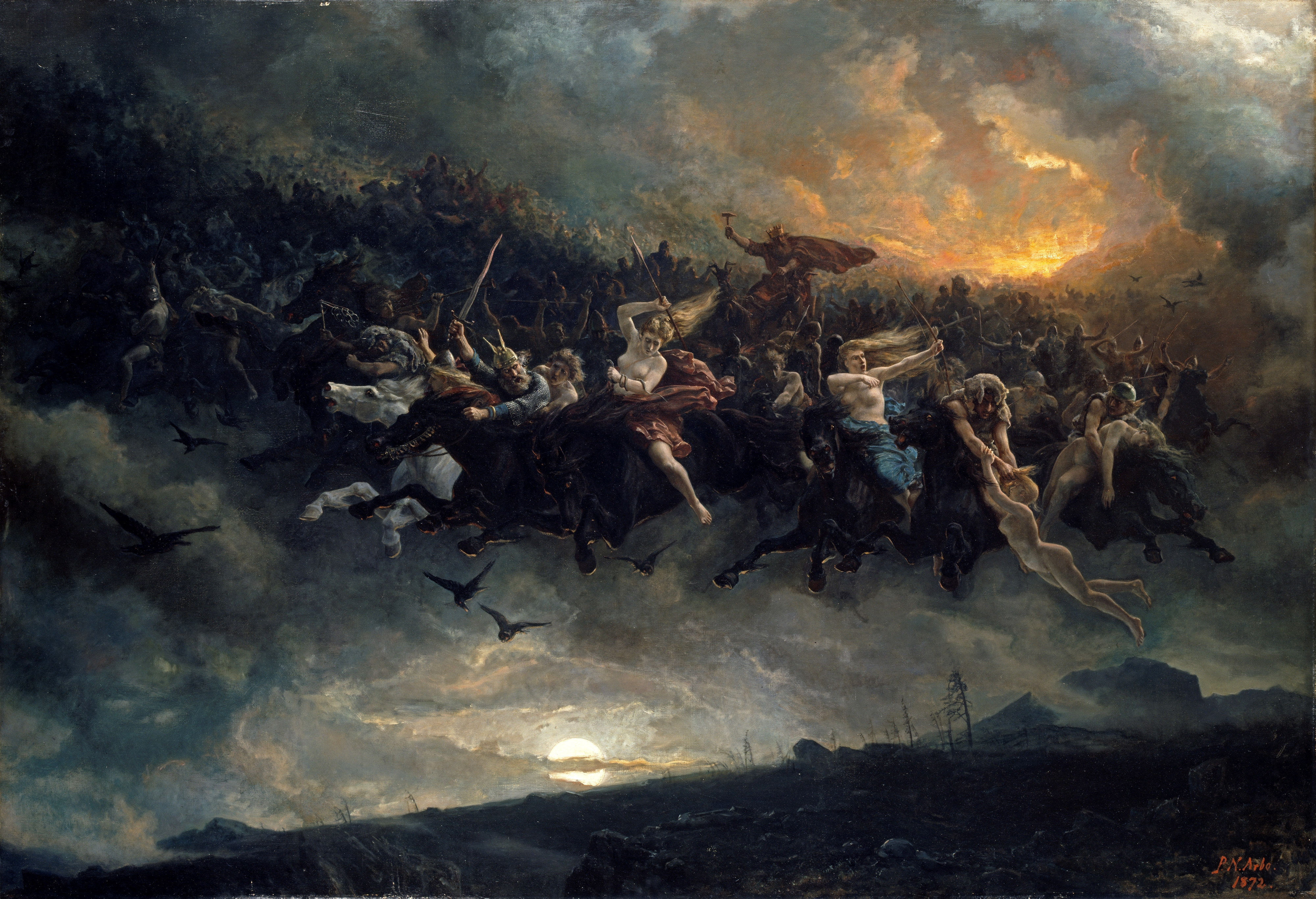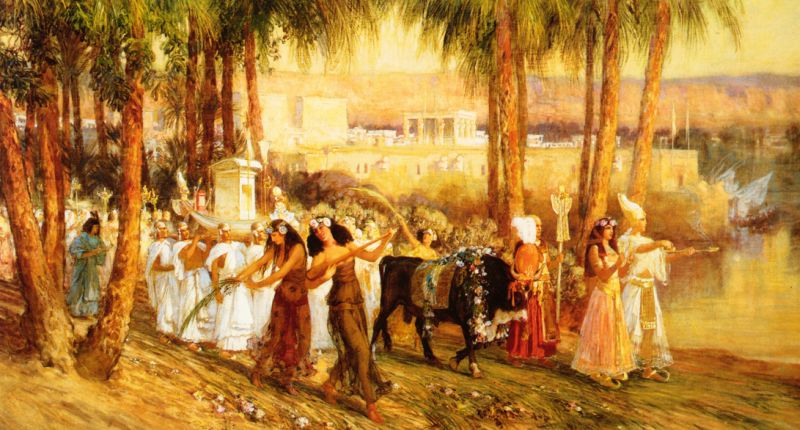|
Klausjagen
The Klausjagen ("Nicholas chase") festival takes place in the Swiss town of Küssnacht on the eve of St. Nicholas Day. The festival, attended each year by about 20,000 people, consists of a parade of around 1,500 participants, and lasts far into the night. History The procession is believed to have its roots in pre-Christian pagan traditions involving the chasing of wild spirits (compare Wild Hunt The Wild Hunt is a folklore motif (Motif E501 in Stith Thompson's Motif-Index of Folk-Literature) that occurs in the folklore of various northern European cultures. Wild Hunts typically involve a chase led by a mythological figure escorted by ...). The early forms of the Klausjagen involved much unruliness and noise, and were frowned upon by Church and authorities, and were officially outlawed in 1732, but could not be effectively suppressed. In the late 19th century, the custom was instead "Christianized" and bishop's mitres first appeared in the procession. [...More Info...] [...Related Items...] OR: [Wikipedia] [Google] [Baidu] |
Küssnacht
Küssnacht am Rigi (official name since 2004: Küssnacht) is a village and a district and a municipality in the canton of Schwyz in Switzerland. The municipality consists of three villages Küssnacht, Immensee, and Merlischachen, the hamlet ''Haltikon'', the industrial area ''Fänn'', and the alp ''Seeboden''. It is situated at the north shore of Lake Lucerne and at the south shore of Lake Zug below mount Rigi (). History Küssnacht is first mentioned around 840 as ''in Chussenacho'' though this is from an 11th Century copy of the original document. In 1179 it was mentioned as ''Chussenacho''. In 1424 Küssnacht became a ''district'' of the Canton of Schwyz. Its etymology comes from the German words Küss and Nacht, meaning Kiss and Night respectively. According to the legend of Wilhelm Tell, the hero shot the Austrian bailiff Gessler at the ''Hohle Gasse'' near the ''Gesslerburg'' with his crossbow: On August 29, 1935, Queen Astrid of the Belgians was killed here in ... [...More Info...] [...Related Items...] OR: [Wikipedia] [Google] [Baidu] |
Swiss Folklore
Swiss folklore describes a collection of local stories, celebrations, and customs of the alpine and sub-alpine peoples that occupy Switzerland. The country of Switzerland is made up of several distinct cultures including German, French, Italian, as well as the Romansh speaking population of Graubünden. Each group has its own unique folkloric tradition. Switzerland has always occupied a crossroads of Europe. While Switzerland has existed as an alliance and country since 1291, the Swiss as a culture and people existed well before this time. Before the Swiss, the region was occupied by Pagan and later Christian Germanic tribes which would become the Swiss. Before the Germanic peoples, the region was occupied by Roman and Gallo-Roman populations. Finally, before the Romans the Celtic Helvetii lived in what would become Switzerland. In addition to conquest, Switzerland has been a crossroads of Europe since at least the Roman Empire. Constant movement of cultures and ideas into Switze ... [...More Info...] [...Related Items...] OR: [Wikipedia] [Google] [Baidu] |
Saint Nicholas
Saint Nicholas of Myra, ; la, Sanctus Nicolaus (traditionally 15 March 270 – 6 December 343), also known as Nicholas of Bari, was an early Christian bishop of Greeks, Greek descent from the maritime city of Myra in Asia Minor (; modern-day Demre, Turkey) during the time of the Roman Empire. Because of the many miracles attributed to his intercession, he is also known as Nicholas the Wonderworker. Saint Nicholas is the patron saint of sailors, merchants, archers, repentant thieves, children, brewers, pawnbrokers, unmarried people, and students in various cities and countries around Europe. His reputation evolved among the pious, as was common for early Christian saints, and his legendary habit of secret gift-giving gave rise to the traditional model of Santa Claus ("Saint Nick") through Sinterklaas. Little is known about the historical Saint Nicholas. The earliest accounts of his life were written centuries after his death and probably contain legendary elaborations. He is ... [...More Info...] [...Related Items...] OR: [Wikipedia] [Google] [Baidu] |
Wild Hunt
The Wild Hunt is a folklore motif (Motif E501 in Stith Thompson's Motif-Index of Folk-Literature) that occurs in the folklore of various northern European cultures. Wild Hunts typically involve a chase led by a mythological figure escorted by a ghostly or supernatural group of hunters engaged in pursuit. The leader of the hunt is often a named figure associated with Odin in Germanic legends, but may variously be a historical or legendary figure like Theodoric the Great, the Danish king , the Welsh psychopomp , biblical figures such as Herod, Cain, Gabriel, or the Devil, or an unidentified lost soul or spirit either male or female. The hunters are generally the souls of the dead or ghostly dogs, sometimes fairies, valkyries, or elves. Seeing the Wild Hunt was thought to forebode some catastrophe such as war or plague, or at best the death of the one who witnessed it. People encountering the Hunt might also be abducted to the underworld or the fairy kingdom. In some instances, ... [...More Info...] [...Related Items...] OR: [Wikipedia] [Google] [Baidu] |
Schmutzli
The companions of Saint Nicholas are a group of closely related figures who accompany Saint Nicholas throughout the territories formerly in the Holy Roman Empire or the countries that it influenced culturally. These characters act as a foil to the benevolent Christmas gift-bringer, threatening to thrash or abduct disobedient children. Jacob Grimm (''Deutsche Mythologie'') associated this character with the pre-Christian house spirit (kobold, elf) which could be benevolent or malicious, but whose mischievous side was emphasized after Christianization. The association of the Christmas gift-bringer with elves has parallels in English and Scandinavian folklore, and is ultimately and remotely connected to the Christmas elf in modern American folklore. Names for the "dark" or threatening companion figure include: ''Knecht Ruprecht'' in Germany, ''Krampus'' in Austria, Bavaria, Parkelj in Slovenia, Friuli, Croatia, Hungary (spelled ''Krampusz''); ''Klaubauf'' in Bavaria, Austria; ''Bar ... [...More Info...] [...Related Items...] OR: [Wikipedia] [Google] [Baidu] |
Trycheln
A cowbell (or cow bell) is a bell worn around the neck of free-roaming livestock so herders can keep track of an animal via the sound of the bell when the animal is grazing out of view in hilly landscapes or vast plains. Although they are typically referred to as "cow bells" due to their extensive use with cattle, the bells are used on a wide variety of animals. Characteristics and uses The bell and clapper are commonly crafted from iron, bronze, brass, copper, or wood. The collar used to hold the bell is traditionally made with leather and wood fibers. The craftsmanship of cow bells varies by geographic location and culture. Most cow bells are made of thin, flat pieces of plated sheet metal. Plating causes the sheet metal to have a surface which can be decorated or left plain. The ornaments on the cow bell and the collar are usually decorative although some cultures believe that certain ornaments provide or enhance magical protections such as the power to prevent or cure ... [...More Info...] [...Related Items...] OR: [Wikipedia] [Google] [Baidu] |
Tourist Attractions In The Canton Of Schwyz
Tourism is travel for pleasure or business; also the theory and practice of touring (other), touring, the business of attracting, accommodating, and entertaining tourists, and the business of operating tour (other), tours. The World Tourism Organization defines tourism more generally, in terms which go "beyond the common perception of tourism as being limited to holiday activity only", as people "travelling to and staying in places outside their usual environment for not more than one consecutive year for leisure and not less than 24 hours, business and other purposes". Tourism can be Domestic tourism, domestic (within the traveller's own country) or International tourism, international, and international tourism has both incoming and outgoing implications on a country's balance of payments. Tourism numbers declined as a result of a strong economic slowdown (the late-2000s recession) between the second half of 2008 and the end of 2009, and in consequence of t ... [...More Info...] [...Related Items...] OR: [Wikipedia] [Google] [Baidu] |
Festivals In Switzerland
A festival is an event ordinarily celebrated by a community and centering on some characteristic aspect or aspects of that community and its religion or cultures. It is often marked as a local or national holiday, mela, or eid. A festival constitutes typical cases of glocalization, as well as the high culture-low culture interrelationship. Next to religion and folklore, a significant origin is agricultural. Food is such a vital resource that many festivals are associated with harvest time. Religious commemoration and thanksgiving for good harvests are blended in events that take place in autumn, such as Halloween in the northern hemisphere and Easter in the southern. Festivals often serve to fulfill specific communal purposes, especially in regard to commemoration or thanking to the gods, goddesses or saints: they are called patronal festivals. They may also provide entertainment, which was particularly important to local communities before the advent of mass-produced ... [...More Info...] [...Related Items...] OR: [Wikipedia] [Google] [Baidu] |
1732 Disestablishments
Year 173 ( CLXXIII) was a common year starting on Thursday (link will display the full calendar) of the Julian calendar. At the time, it was known as the Year of the Consulship of Severus and Pompeianus (or, less frequently, year 926 ''Ab urbe condita''). The denomination 173 for this year has been used since the early medieval period, when the Anno Domini calendar era became the prevalent method in Europe for naming years. Events By place Roman Empire * Gnaeus Claudius Severus and Tiberius Claudius Pompeianus become Roman Consuls. * Given control of the Eastern Empire, Avidius Cassius, the governor of Syria, crushes an insurrection of shepherds known as the Boukoloi. Births * Maximinus Thrax ("the Thracian"), Roman emperor (d. 238) * Mi Heng, Chinese writer and musician (d. 198) Deaths * Donatus of Muenstereifel, Roman soldier and martyr (b. AD 140 Year 140 ( CXL) was a leap year starting on Thursday (link will display the full calendar) of the Julian calen ... [...More Info...] [...Related Items...] OR: [Wikipedia] [Google] [Baidu] |
Festivals Established In 1928
A festival is an event ordinarily celebrated by a community and centering on some characteristic aspect or aspects of that community and its religion or cultures. It is often marked as a local or national holiday, mela, or eid. A festival constitutes typical cases of glocalization, as well as the high culture-low culture interrelationship. Next to religion and folklore, a significant origin is agricultural. Food is such a vital resource that many festivals are associated with harvest time. Religious commemoration and thanksgiving for good harvests are blended in events that take place in autumn, such as Halloween in the northern hemisphere and Easter in the southern. Festivals often serve to fulfill specific communal purposes, especially in regard to commemoration or thanking to the gods, goddesses or saints: they are called patronal festivals. They may also provide entertainment, which was particularly important to local communities before the advent of mass-produced entert ... [...More Info...] [...Related Items...] OR: [Wikipedia] [Google] [Baidu] |








